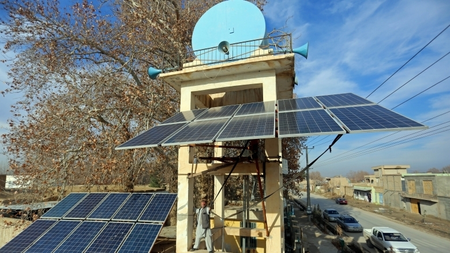
US Recession Alert: JPMorgan Predicts 0.3% GDP Slump, Job Losses Amid Tariff Turmoil
JPMorgan Chase & Co. has sounded the alarm on a looming recession in the United States, forecasting a 0.3% contraction in GDP and a sharp rise in unemployment to 5.3% in 2025.
This grim projection follows a wave of new tariffs imposed by President Donald Trump, aimed at reshaping trade dynamics with global partners, including India. The move has already triggered massive market sell-offs and prompted leading banks to slash growth estimates.
Michael Feroli, JPMorgan’s chief U.S. economist, stated in a note to investors that the U.S. economy will contract “under the weight of the tariffs,” downgrading the earlier GDP growth estimate from 1.3% to -0.3%.
Wall Street responded with deep losses. On April 4, all major U.S. stock indices suffered over a 5% drop, marking the worst two-day slump in nearly a year. The S&P 500 plunged to its lowest level in 11 months, wiping out $5.4 trillion in market value.
Feroli’s analysis wasn’t isolated. Barclays Plc, Citi, and UBS also revised their economic forecasts. Barclays now expects a full-year contraction, while Citi reduced its growth forecast to 0.1%. UBS cut its forecast to 0.4%, warning of a dramatic reduction in imports by more than 20%—taking import levels back to pre-1986 figures.
UBS chief economist Jonathan Pingle warned of “substantial macroeconomic adjustment” in the $30 trillion U.S. economy due to the force of these new trade policies.
Adding to the pressure, President Trump’s reciprocal tariff policy enforces a 10% duty on all imports starting April 5. From April 9, nations with the highest trade deficits—including India—will face tailored tariffs, with India’s exports now taxed at a steep 26%.
The U.S. Federal Reserve may step in to cushion the blow. JPMorgan expects the Fed to begin cutting interest rates in June, followed by further reductions through January, potentially bringing the benchmark rate down to between 2.75% and 3%. Current rates sit in the 4.25%–4.5% range.
However, such rate cuts could complicate inflation control. Feroli warned that underlying inflation may rise to 4.4% by year-end, up from 2.8%, even as the Fed cuts rates to counter the downturn.
Federal Reserve Chair Jerome Powell voiced concern at a business journalism conference, highlighting the unexpected damage the tariffs could bring. Powell emphasized the difficulty the Fed may face in managing inflation under these evolving conditions.
Meanwhile, President Trump remained defiant, tweeting that it’s “time to get rich” despite the economic fears. His administration maintains that the tariffs are a necessary correction to long-standing trade imbalances and will ultimately strengthen American industry.
Yet, economic experts fear that the rapid and aggressive nature of these policies could destabilize an already fragile recovery.
Global markets are watching closely as U.S. economic indicators wobble. With banks cutting forecasts and inflation pressures rising, the months ahead could shape not just the U.S. economy but ripple across global trade as well.
India, facing the 26% export tariff, may see its trade surplus with the U.S. shrink. Analysts predict challenges for Indian exporters, especially in sectors like textiles, pharmaceuticals, and technology.
As the world’s largest economy braces for impact, the warning from JPMorgan echoes a broader concern: in an interconnected world, protectionism may come at a steep price.
With uncertainty gripping Wall Street and Washington, attention now turns to the Federal Reserve’s next moves—and whether global diplomacy can soften the economic blow.




